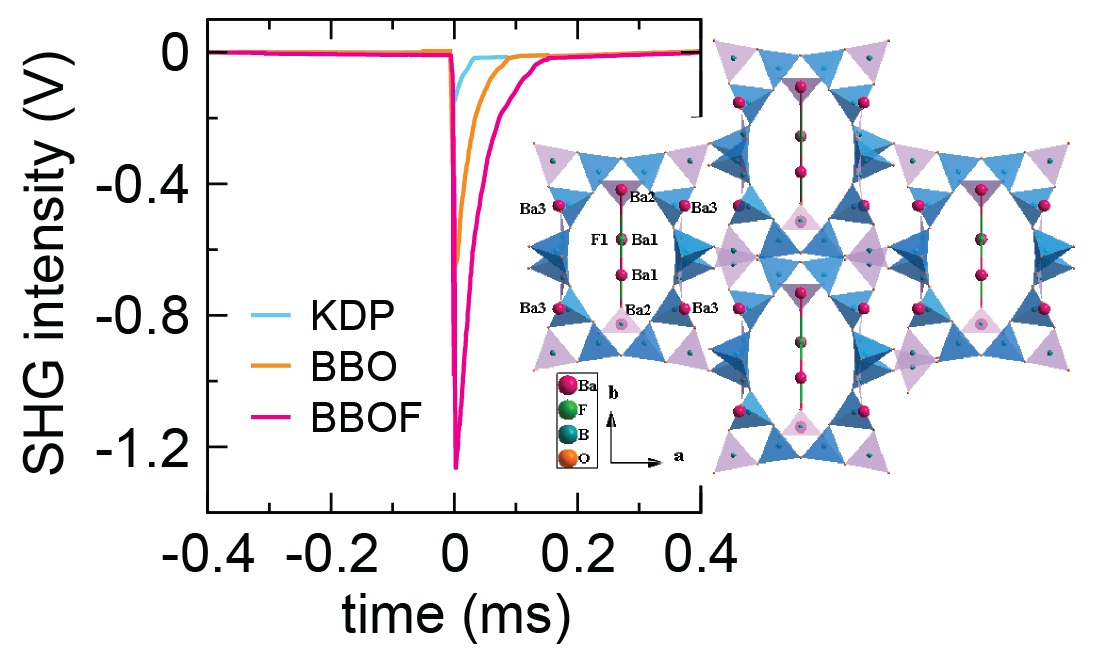 A new deep-UV NLO material, Ba4B11O20F is obtained by introduction of fluorine atoms in a barium borate system to generate large polar atomic displacements that Rondinelli and collaborators identify to be responsible for the SHG response—it is approximately 10X that of KH2PO4 and is the largest of borates containing neither lone pair active ions nor second-order Jahn-Teller active transition metals.
A new deep-UV NLO material, Ba4B11O20F is obtained by introduction of fluorine atoms in a barium borate system to generate large polar atomic displacements that Rondinelli and collaborators identify to be responsible for the SHG response—it is approximately 10X that of KH2PO4 and is the largest of borates containing neither lone pair active ions nor second-order Jahn-Teller active transition metals.Professor Rondinelli and colleagues at Northwestern University and Xinjiang Technical Institute of Physics & Chemistry report a structure-based design strategy for second harmonic generating crystals with large responses in the Journal of the American Chemical Society. The article, titled "Designing a Deep Ultraviolet Nonlinear Optical Material with Large SHG Response," describes a new atomic structure acentricity descriptor and links the macroscopic electro-optical response to the "amount" of polar displacements at the unit cell level in the crystal. The new structure-based approach to tailoring the optical properties of materials provides a novel platform to design materials at the atomic scale with targeted macroscopic responses. The generation of intense coherent deep-UV light from nonlinear optical materials is crucial to applications ranging from semiconductor photolithography and laser micromachining to photochemical synthesis.